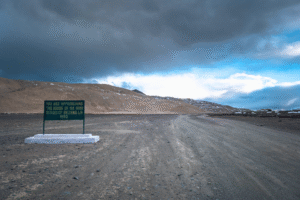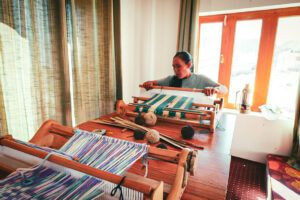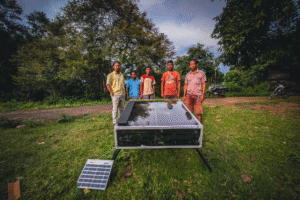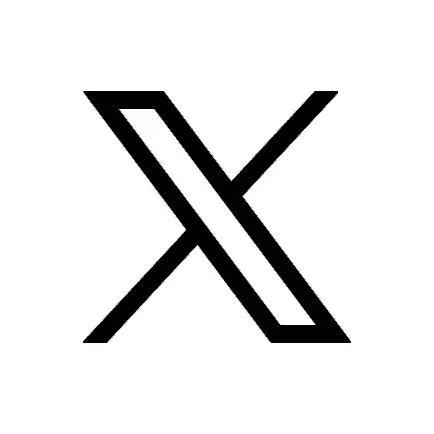EVERYTHING YOU NEED TO KNOW
FREQUENTLY ASKED QUESTIONS
Learn how GHE brings clean energy and opportunity to remote communities
What does GHE do?
GHE works to enable sustainable development in remote underserved and off‐grid communities by collaborating with local stakeholders, governments, businesses and the villagers to deliver integrated solutions across clean energy access, digital learning, healthcare infrastructure, livelihoods and regenerative tourism.
Why regions does GHE Focus on?
GHE is currently working across 10 states in India. These are Ladakh, Meghalaya, Nagaland, Assam, Arunachal Pradesh, Odisha, Chattisgarh, Himachal Pradesh, Mahrashtra and Gujarat. The vision and mission is to work in rural regions of India that often lack reliable infrastructure in the form of electricity, connectivity, health facilities and livelihoods which constrains development and causes migration. GHE targets such areas to deliver impact by enabling basic services and income generation opportunities, thereby creating local resilience.
What is GHE’s development philosophy or model?
Key pillars include:
- Co-creation with local communities
- Strengthening local ownership and capacity
- Integration across sectors (energy + education + livelihoods)
- Using impact and data driven decision making
- Partnering with private, public and social actors for scalability
What kinds of thematic areas does GHE run?
Core programme areas include:
- Clean energy access (solar microgrids, renewables in remote communities)
- Digital education and ICT labs (solar-powered schools, digital infrastructure)
- Healthcare infrastructure (health centres powered by renewables and critical
medical care equipments) - Sustainable homestay and rural tourism (eco-homestays, destination
development) - Handicrafts and Food Processing (Creating handicraft value chains, setting up
community cafes) - Decarbonisation & environment (clean cook-stoves, forest regeneration)
These integrate into “sustainable development” in the broadest sense.
How does GHE ensure local ownership and sustainability of interventions?
GHE designs interventions in collaboration with local community members and stakeholders. This is followed by training of local technicians/entrepreneurs for maintenance and selecting models suited to the local economy. Once the local team is trained, it helps ensure that the mechanism is setup for ongoing operations.
How does GHE measure impact and success?
Success is gauged across multiple dimensions:
- Infrastructure delivered (e.g., number of homes electrified, computers installed)
- Uptake and usage (community engagement, systems in active use)
- Livelihood outcomes (e.g., income generation, migration reduction)
- Environmental gains (e.g., reduction in biomass use, carbon emission reduction)
- Sustainability of operation (systems function beyond initial installation)
GHE uses data monitoring and evaluation to track progress to ensure robustness of project implementation and operations.
How does GHE handle scaling or replication of its models?
By developing models that are replicable (modular approach), documenting learnings, aligning with partners (government/CSR/corporates) for scale and using impact data to build the business case. The aim is not just project‐by‐project but creating ecosystems of sustainable change.
How can organizations, funders or CSR teams engage with GHE?
Engagement can take multiple forms:
- Funding or sponsoring specific projects (e.g., a solar electrification scheme, digital lab)
- Technical collaboration (providing technology, training modules, market linkages)
- Participating in “impact expeditions” that involve field visits + project implementation
- Cocreating scaleup programmes (e.g., replication in new geographies)
Supporting monitoring, evaluation or policy advocacy activities
What are the expected responsibilities of partners?
Partners typically engage in codesign, allocate resources, commit to long term sustainability, collaborate in monitoring/reporting and align with GHE’s ethos of community led, integrated development.
Are there volunteer or “expedition” opportunities with GHE?
Yes, GHE runs “impact expeditions” where we take employees from our partner organisations to visit the field and work alongside the local communities to assist in implementation of the project and experience sustainable development in remote settings.
What kinds of outcomes or impact has GHE achieved so far?
Please refer to the individual intervention pages for impact on each vertical.
How is GHE different from typical NGOs or development agencies?
GHE’s focus is to bring development to remote geographies that are often overlooked and have been left behind the development agenda. The approach at GHE is to follow an integrated model (energy + education + livelihoods + health) rather than siloed interventions, to ensure a holistic approach towards rural sustainable development. The emphasis is to build local ownership with the staff comprising of more than 95% local teams in the region where the work is being implemented. Through “impact expeditions”, we are able to bridge the gap between the funding organisation and the communities.












